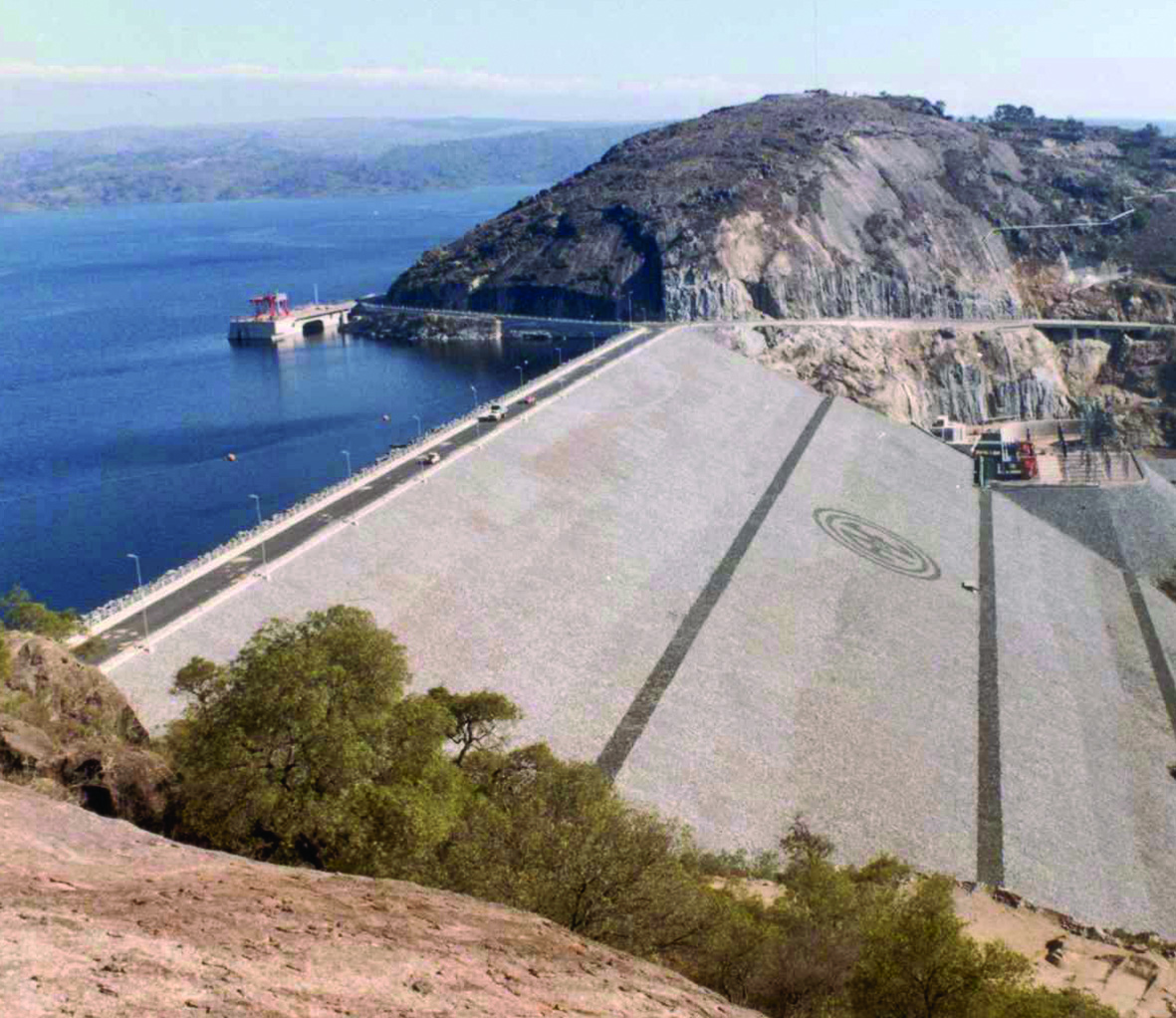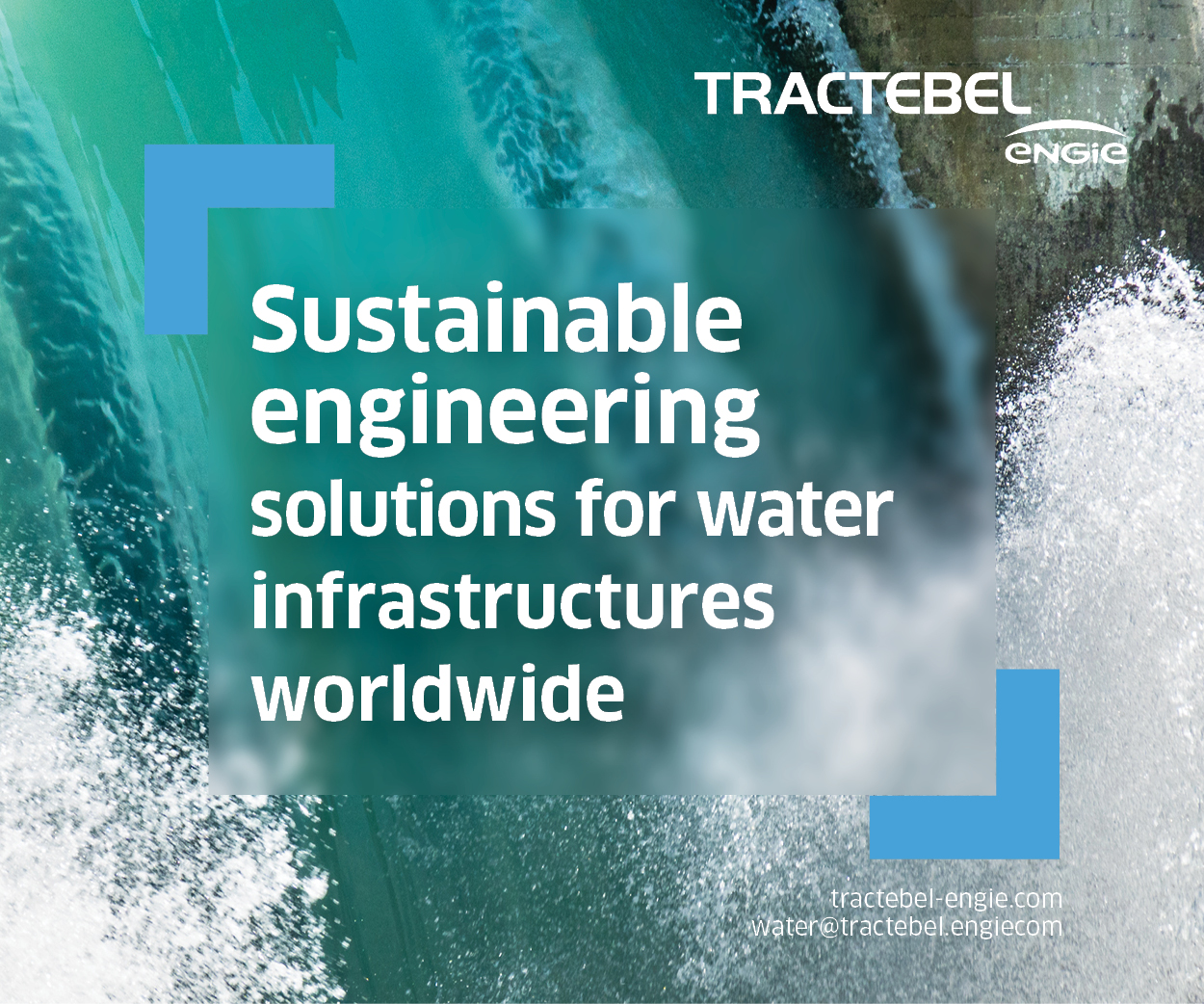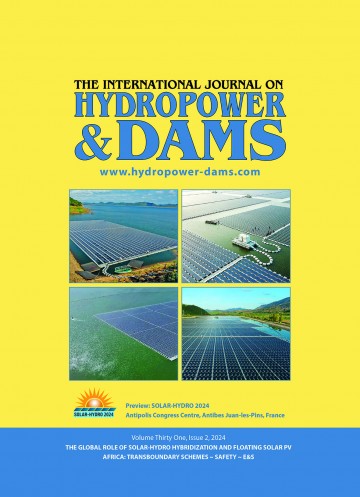Latin America and the Caribbean (LAC) includes 33 countries. The electricity sectors are diverse, ranging from fully integrated and state-owned entities (such as Paraguay), to deregulated markets with complete private participation in generation, transmission, and distribution (such as Chile), and mixed models (such as Brazil). LAC has a very large potential for conventional and non-conventional renewable resources. Noneth eless, until recently, only hydropower has been exploited on a large scale. LAC has historically been a major region for hydroelectricity generation, with almost 200 GW currently in operation. However, it has been continually declining since 1993 as countries transition to a more diversified portfolio mix, with natural gas playing an important role in recent decades, and variable renewables gaining importance recently.
eless, until recently, only hydropower has been exploited on a large scale. LAC has historically been a major region for hydroelectricity generation, with almost 200 GW currently in operation. However, it has been continually declining since 1993 as countries transition to a more diversified portfolio mix, with natural gas playing an important role in recent decades, and variable renewables gaining importance recently.
It is expected that electricity demand in the region will double from the current 1550 TWh/year to 2800–3500 TWh/year by the year 2040, which represents an annual growth rate of 2.7–3.6 per cent, depending on the growth scenario. The Southern Cone (Brazil, Argentina, Chile, Paraguay and Uruguay) accounts for 57 per cent of the total power demand, and is expected to continue to be the largest consumer in the coming decades, particularly influenced by the weight of Brazil. Central America (Belize, Guatemala, Honduras, Costa Rica, Nicaragua, Panamá and El Salvador) and the Andean Zone (Venezuela, Colombia, Perú, Ecuador and Bolivia) follow as the second and third consumers in the region, with higher growth rates than the Southern Cone’s large countries. Although no sub-region will dominate the cumulative increase in electricity supply, demand in the Andean Zone is expected to increase at a slightly faster pace, with an average annual growth rate of 4.7 per cent from 2014 to 2040, followed by Central America with 3.9 per cent, compared with an average of 3.2 per cent for the whole LAC region.
An emerging market for storage schemes
In the next decades, it is expected that the growth in supply will be dominated by the development of clean energy options, particularly variable renewable sources, as in most countries these technologies are already competitive and are being installed to reduce fossil fuel consumption. Therefore, a change in the generation matrix is expected, with hydropower and natural gas still dominating, but with a growing participation of solar and wind power. A conservative scenario projects 19 per cent of solar and wind generation by 2030, with hydropower still providing 46 per cent of electricity. More aggressive scenarios for the region envisage a larger participation of renewable sources, to achieve net zero emissions by 2050. The evolution of the power sector in the region will be based on a combination of large-scale and centralized powerplants, distributed generation, and even isolated microgrids. Storage technologies will be crucial, to enable the management of the intrinsic variability of some renewable generation (wind and solar), particularly in scenarios where there is a need to reduce fossil fuels used for base generation. Pumped-storage technology is an attractive alternative, given the region’s hydropower potential, existing installed capacity, and technical knowledge and experience.
In 1939, the first pumped-storage plant was inaugurated in Brazil, and three additional ones were built and began commercial operation before 1955. Since then, Argentina developed Los Reyunos (224 MW), between 1978 and 1983, and the Río Grande pumped-storage plant between 1970 and 1986, but no other pumped-storage plants were built in LAC. Rio Grande is a reversible plant with the highest capacity in South America. In the same period, there was considerable development of hydroelectric plants with large reservoir storage capacities in the region, and the incorporation of pumped storage was not considered necessary. Consequently, there is only 1 GW installed of pumped-storage capacity currently in operation in the region, in Argentina (750 MW and 224 MW) and in Brazil (20 MW).
However, the region is seen as one of the most attractive emerging markets for energy storage development. The expected growth in variable renewable energy generation, rapidly growing population and associated energy demand, as well as the need for higher flexibility in the power systems, are among the major factors driving interest in energy storage technologies throughout LAC, including pumped storage . The region could benefit from the well known multiple benefits which such energy storage technology can provide at large scale, for example: bulk energy services, integration services, ancillary services, transmission and distribution services, and customer energy management services.
The particular relevance of pumped storage is that the technology is already mature and reliable. In the LAC countries, it could be developed either through greenfield projects or through the extension of existing hydroelectric powerplants. Although conventional hydro potential does not automatically correspond to pumped storage potential, it does provide an indication on which to base a further assessment of such potential; the untapped potential for hydropower is estimated at between 250 and 500 GW in the region. Moreover, there is around 130 GW at existing hydropower plants that will need to be modernized in the coming decades, and some of them could have the potential to be adapted to incorporate pumped storage.
As regards the different regions of LAC, both South and Central America are among the regions with the greatest energy storage potential in the world, with 7000 to 8000 GWh per million people each. However, this development potential is multifactorial, and the region shows advantages and disadvantages. Relative advantages include the favourable geography, with appropriate topography and space for the location of reservoirs, and the growing development of variable renewable energy projects. However, the electricity market environment and its current regulation could limit the region’s possibilities to promote pumped-storage plants.
Pumped-storage schemes are not listed in public investment portfolios, or in planning portfolios. There are only very specific initiatives, usually promoted by the private sector. In Chile, for example, there is the Espejo de Tarapacá pumped-storage project, which already has environmental permits; and in Peru, a mining company has developed the project profile of a 100 MW pumped-storage scheme with an estimated CAPEX of US $145 million. In the rest of the countries, except for Argentina where a pumped-storage plant has been operating for years, project development is not reported.
It can be noted that in several LAC countries, changes in energy sector regulations can take a long time to be implemented. Therefore, a first step for PSH development could be to identify a solution that could allow an attractive environment for investors but avoiding any major changes in regulations. In the case of countries where the transmission system has been deregulated, but there is a central operator of the grid, a possible way to introduce PSH could be to label it as a transmission asset, to be dispatched by the grid operator in the benefit of an optimized, safe, and reliable operation of the grid. In that scenario, the private investors would be paid in the same way as the transmission line owner, through a fix monthly fee, associated with target metrics of availability and performance. Regional coordination and knowledge exchange could be useful to develop regulations that enable storage and hydro-pumped storage technologies.
Challenges, barriers and emerging opportunities
There are several reasons behind the lack of development of PSH in LAC. Firstly, there are many hydroelectric power plants with large reservoirs that provide robust energy storage capacity. The region has developed many major hydroelectric power plants in the past decades, with reservoirs that allow short- medium- and long-term energy storage, and there is a still significant hydroelectric potential remaining that may allow the construction of new hydroelectric plants at competitive prices, providing additional storage for the systems. (All new development must consider environmental and social best practices, and therefore, large reservoirs are less frequent in new greenfield projects). Moreover, retrofitting projects might also extend the life of the existing large scale power plants associated with these reservoirs, hence, enabling the power systems to still have storage capacity available.
Secondly, there is a lack of adequate regulation for energy storage in the region. There are few cases of energy systems with significant differences between peak and non-peak pricing. Also, most regulatory frameworks lack capacity payments that could give economic feasibility to PSH development. In addition, markets for auxiliary or complementary services, which are necessary for this type of project to be competitive, are non-existent.
Developers may not be willing to invest or may require a large return on investment to develop a project with high risk arising from unclear regulation, with an unclear revenue stream, and that they are not well familiarized with. So, a regulatory solution that makes pumped storage an attractive investment option for most developers should be identified. However, the requirement for major changes in power sector regulations may be a great barrier for developing any storage projects, including pumped storage. So, it is recommended to identify first the lowest impact way of introducing storage into the current grid regulations, to accelerate its development.
Another barrier is related to limited local experience and knowledge of energy storage. Although pumped storage is the only proven, and by far the most widely adopted, technology for large-scale energy storage in the world, the knowledge regarding opportunities in the region is lower than that of other technologies, hindering the exploitation of its massive potential. Also, information on accessing to affordable financing is not widely available. Other energy-based projects, especially renewables, are currently competing with the funds that could be used to develop PSH projects as well.
Finally, there are potential barriers related to social and political opposition, which are of a similar nature to those that are related to greenfield hydroelectric plants. There is a challenge regarding the lack of involvement of the affected stakeholders in the appropriate stages of the planning process. There is a need to develop socially responsible projects to mitigate these types of barriers. If this is not considered, political acceptability can become a major factor that may slow down the development of the technology. Moreover, other storage technologies that are perceived to have less social and environmental impacts might be favoured in planning processes.
Regarding opportunities, pumped-storage development could be promoted if the following issues are considered. Firstly, there are geographic advantages, such as coastal and mountain cliffs in many of the countries, which provide elevation differences necessary for hydroelectric generation. Besides, the proximity to the sea in the many of the countries makes it possible to have water resources for intake and discharge and may even provide desalination services. In third place, an enhanced regulatory framework that enables more accurate price signals would probably encourage the development of the technology. Finally, the construction of a PSH project planned for Chile is expected to show both investors and society the benefits of this type of technology.
Recommendations from the IADB
A recently published report from the Inter-American Development Bank (IADB) entitled ‘State of Charge: Energy Sotrage in Latin America and the Caribbean’ [Graham et al, 20211], outlines some recommendations relating to future pumped-storage development, aimed at the various relevant stakeholders. These can be summarized as follows.
For governments:
• Improve knowledge about pumped-storage technologies in the countries, across different actors of the sector (utilities, regulator, planners). This would help close the information gap and include pumped storage as an option in the energy planning process.
• In the planning process, consider the expected future energy mix and grid expansion, especially the increase of variable renewable investments, and the inclusion of pumped storage as a potential technology that could be stimulated as complementary investment, in the form of joint facilities.
• Identify and assess site-specific potential to build a pumped-storage project pipeline that could be included in the planning process.
• Evaluate if existing hydropower facilities could be converted to pumped storage, in modernization projects.
For regulators:
• Develop a minimum set of regulatory rules and conditions that would allow for the different types of services that pumped storage can provide, and assess for the applicability in the country.
• Conduct official assessments on different available regulatory regimes and revenue models for energy storage and pumped-storage plants: cost-of-service, direct-participation, and behind-the-meter (potentially applicable for some very large electricity consumers).
• Consider if flexibility services could be eventually sold in ‘competitive’ wholesale markets (energy, ancillary services, and so on), if markets rules could eventually allow storage services to compete in a non-discriminatory manner with other services.
• Review the availability and level of development of markets and transparent prices for ancillary services, considering market signals and schemes for storage.
• Review the existence of current incentives and standards which could be specifically modified for pumped storage and other energy storage technologies, considering its impact in generation (renewable generation) and transmission (grid stabilization).
• Analyse if there are constraints to develop comprehensible business models, including multiple services (ancillary services, power, energy).
• Review the regulation of energy networks, as storage services may avoid the use of ‘regulated’ networks. Consequently, review if current network rules would allow them to compete in a technologically neutral manner (for example, utility-scale storage versus transmission upgrades).
• Consider whether it would be possible and reasonable for the transmission system operator (TSO) to be a potential owner and/or operator of a pumped-storage investment (given the aggregate information it holds, and economies of scale, to maximize intermittent renewable generation).
• Consider the impact of potential vertical integration, due to new pumped storage investments, on previous contracts with generators and TSOs.
• Identify the mechanism that shall require the least changes in the existing sector regulation to speed the process of implementing pumped storage.
• Consider which regulatory solution could make investment in pumped-storage projects more attractive for private investors and with better financing conditions (reducing the risks for investors).
For system operators:
• Include storage and pumped storage in planning exercises to support renewable energy development.
• Update System Operation codes and regulations to include the possibility to include pumped storage.
For utilities:
• Consider and include pumped storage as a system/network solution when conducting planning assessments, when possible, and if it is allowed by regulation.
• For hydropower utilities, evaluate the possibility to upgrade existing hydropower assets to pumped storage when possible (and following a cost benefit analysis).
For developers:
• Apply the sector best practices in the development of pumped-storage projects, including, for example, the Hydropower Sustainability Assessment tools, and ESG tool of IHA.
Reference
1. Graham, N., Malagón, E., Viscidi, L., and Yépez, A., “State of Charge: Energy storage in Latin America and the Caribbean”, Inter-American Development Bank, USA; 2021.
The Inter-American Development Bank (IDB) is the main source of multilateral financing and expertise for sustainable economic, social and institutional development in Latin America and the Caribbean. The IDB’s approved lending in 2020 totalled US$21.6 billion. It has 2000 employees on four continents, with headquarters in Washington, USA, in 26 borrowing member countries, and regional offices in Asia and Europe. The Group comprises the IDB, which has worked with governments for 60 years; IDB Invest, which serves the private sector; and IDB Lab, which tests innovative ways to enable more inclusive growth.
+ Click here to view Uganda county profile
 eless, until recently, only hydropower has been exploited on a large scale. LAC has historically been a major region for hydroelectricity generation, with almost 200 GW currently in operation. However, it has been continually declining since 1993 as countries transition to a more diversified portfolio mix, with natural gas playing an important role in recent decades, and variable renewables gaining importance recently.
eless, until recently, only hydropower has been exploited on a large scale. LAC has historically been a major region for hydroelectricity generation, with almost 200 GW currently in operation. However, it has been continually declining since 1993 as countries transition to a more diversified portfolio mix, with natural gas playing an important role in recent decades, and variable renewables gaining importance recently.
